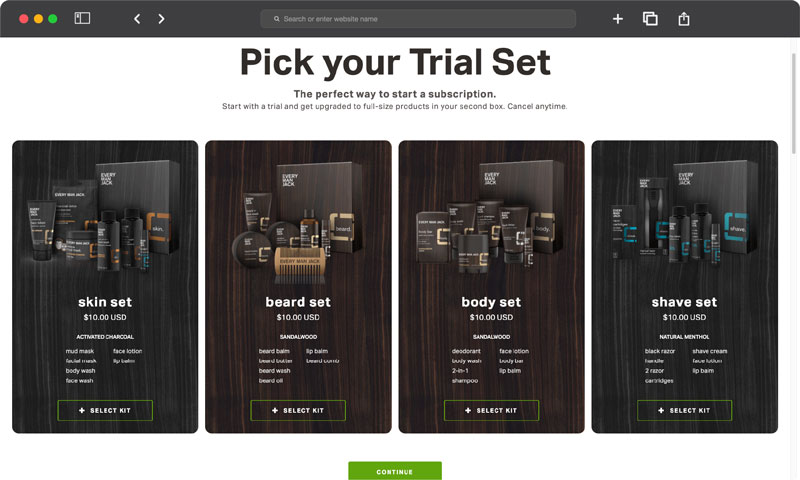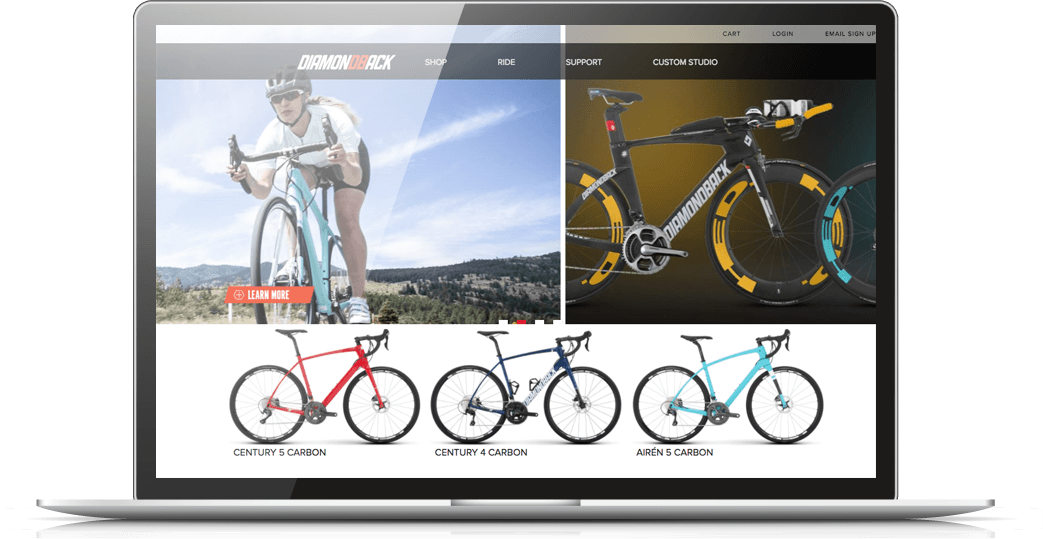This likely won't surprise you, but the best ecommerce platform is the one that best meets the needs of your unique business. If you’re thinking of choosing an ecommerce platform for your business but aren’t sure where to start, we’re here to help. There are a few key tenants to keep in mind when selecting an ecommerce platform—your selling approach, your expected revenue and all the factors associated with it, and the intricacies of each platform.
This blog post, and the following series, will break down the contents of our handy Ecommerce Platform Comparison Guide (we recommend downloading the free guide as a takeaway) so that you can find the information that best aids in your platform decision-making process.
Where to begin your search for a new ecommerce platform
We recommend that you begin your search for a new ecommerce platform by first considering how you intend to sell online and all things that go along with it. This is the first critical step to understanding your business and platform needs. We’ll cover some of the key factors that encompass your selling strategy and what that means for choosing an ecommerce platform.
We’ll go through these primary selling approaches:
- Custom ecommerce storefront for your brand
- Business-to-business (B2B) sales
- Subscriptions
- Experience-driven commerce
- Product customizers
- Online marketplace
- Ticketing & memberships
- Unique online sales scenario
Let's dive in!
1. Custom ecommerce storefront for your brand
Almost every business will want an online storefront that reflects their brand. The level of customization you do can really vary depending on your needs. You might just need a simple storefront, building off of a stock theme as a base, or perhaps you need a highly-custom design and user experience (UX) to reflect your unique brand proposition.
Most ecommerce platforms will support building a custom UX. From a branding perspective, we typically think of the available ecommerce platform options in two categories:
- Platforms with full access to the code base: Businesses that have unique customer flows, need a custom checkout, or are trying to create a new user experience will likely need a platform with full access to the code base. This allows you to customize your website to look and feel exactly the way you want and establish a customer flow that fits your company. This tends to be an option for medium and large businesses because of the cost, time, and resources required to design, build, secure, and maintain a custom UX. It’s a great choice for retailers with unique business situations that don’t follow a “standard” approach and view their ecommerce store as an agile and ongoing part of their business.
- Software as a Service (SaaS) platforms: These are typically less expensive and faster to build and come with automatic updates for the core platform code. The speed and lack of maintenance certainly sound appealing, but the trade-off is that you don’t have full control of your data, the checkout process, aspects of the website's design, or the ability to customize third-party integrations. It’s a good choice if you have fairly traditional ecommerce needs.
In either case, you’re getting a custom storefront for your brand, on your company's domain name, that you can manage to your liking.
2. Business-to-business (B2B) sales
Customer expectations surrounding B2B website approaches have evolved. Businesses are seeing customers go from only making large purchases through a sales rep to placing a $300,000 order for new machinery on their smartphone.
The chief benefit of a modern website is its ability to assist your existing customers with day-to-day ordering and replenishment. This means your team is processing fewer phone orders and your clients are empowered to maneuver these details whenever they need to without having to carve time out of their schedule to reach out directly.
B2B online sales comes with some unique considerations like corporate accounts, requisition lists, shipping preferences, specific delivery dates, payment on terms, saved delivery locations, drop shipments, and more — all important customer experience factors of a good B2B website.
3. Subscription Businesses
Subscription services are everywhere today—proliferating into new industries, particularly consumable products like coffee, meal kits, laundry detergent, and even dog poop bags.
Customers love using subscription services because they offer convenience, value, and consistency. Businesses love subscriptions for customer retention, recurring revenue streams, and other surprising benefits.
Subscription services typically fall into one (sometimes two) of these categories:
- Replenishment / auto-ship subscriptions provide auto-ship deliveries of consumable products to customers on a regular schedule. Often a “subscribe and save” model. Examples: vitamins, coffee, dog food.
- Curated box subscriptions group collections of products for customers based on their unique needs and preferences. Examples: Grove Collaborative, Blue Apron.
- Access subscriptions give access to the company's products (often discounted) through a membership. Example: Lynda.com, Wall Street Journal.

4. Experience-driven commerce
In a brick-and-mortar store, customers are able to physically interact with a product, see it presented within a beautiful and inspiring display, and speak to a customer service associate during the decision-making and purchase processes.
Experience-driven commerce in an online storefront centers around creating an amazing experience for a highly-targeted audience — immersing them in what it’s like to have the product so they can see themselves using and enjoying it (such as Patagonia).
These immersive experiences serve as a foundation for a business's digital marketing strategy, bringing products to life as marketers deliver the right message and experience at the right moment, ultimately connecting with customers and increasing conversions.
5. Product customizers
Some ecommerce selling strategies revolve around product builders. This scenario typically starts with a base product (say the frame of a bike), and allows the customer to fully customize the components included on the end bike. The product is then assembled and delivered to the customer.
With product customizers, there are often tens of thousands or even millions of possible final combinations of components that can make up the bill-of-materials that the end product the customer purchases.

6. Online marketplace/ Reseller strategy
An online marketplace is an ecommerce store that sells a wide variety of products from many merchants to customers. While online marketplaces have been around for quite some time, the volume and variety of marketplaces are surging as businesses increasingly rely on their digital strategies to drive business.
The variety and quantity of products you offer can lead to more visitors to your website—this exposure is one of the advantages for brands wanting to sell in an online marketplace. Customers appreciate that they can shop for products from a wide range of merchants within the marketplace and complete a simple checkout process without having to visit individual merchant storefronts. Marketplaces can be built around a vertical, or product line of interest to a group of customers.
7. Ticketing and memberships
Organizations that sell ticketing and membership typically have back-office CRM and point of sale (POS) needs that are part of their ecommerce scope. These can be arts and culture organizations, or sites where membership provides access to additional services or content.
Typical user journeys might include things like purchasing a membership, membership verification, purchasing tickets (often with the complexity of specifying days and entry times), registering for events, and providing membership to friends and family. These ecommerce builds require tight integration with a CRM system.
8. A unique online sales scenario
Some businesses have evolved very unique ways to engage with customers that don’t entirely fit traditional ecommerce models or combine several of the online commerce strategies above and want to leverage a single technology base to do it all.
In a unique online sales scenario, the platform selection process becomes critical. You want to have access to the underlying code base, or at minimum, a very strong API, to support the selling model that your business requires. This allows you to “bend” the technology around your business, and not compromise the sales experience.
Final Thoughts
We’re here to aid you in choosing the best ecommerce platform for your business. Remember, when selecting an ecommerce platform—conceptualize your selling approach, your expected revenue, and all the factors associated with it, and understand the intricacies of each platform.
This is just the first part of our blog series which covered how your selling approach can influence which ecommerce platform you should choose. The other blogs in this series will cover your expected revenue and the ins and outs of each individual platform.
And don’t forget, you can always download our full Ecommerce Platform Comparison Guide if you’d like the full guide all at once.
If you have any questions, feel free to set up a quick 30-minute intro call with us. We’d love to hear about your ecommerce project.
Want to learn more? Don't forget to check out the other blogs in this series:
